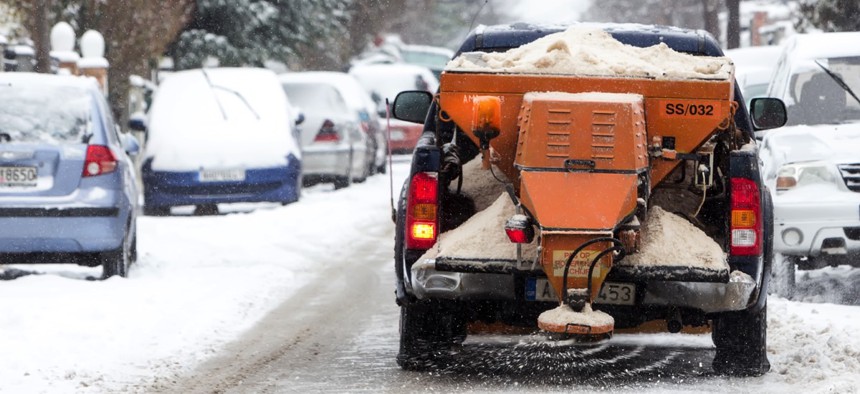How Analytics Are Saving Kentucky Money on Snow and Ice

Knowing which snow plow and salt spreader routes to take and how much material to use could save the state millions of dollars.
Kentucky snow and ice expenses run from $40 million to $80 million each year depending on the winter, so the state Transportation Cabinet began monitoring roadways with a real-time information management system.
The state was one snow event away from running out of salt during the 2014-15 season because spreader route inefficiencies made it hard to control material usage and, thus, costs.
In 2015, KYTC piloted new intelligent transportation systems that leverage real-time, crowdsourced streaming data from community-based traffic and navigation app Waze, weather reports, Twitter and automatic vehicle locators to optimize snow and ice response.
“As we get all trucks enabled that allows us to monitor fully route conditions like salt on the roads,” said Clay Thompson, KYTC’s Office of Information Technology enterprise data branch manager, in an interview.
The pilot consisted of 200 trucks, but the agency has 1,400-plus.
Speed, road condition, temperature and salt rate data are all at the agency’s disposal now, and a GIS layer allows for constant tracking of truck locations. KYTC can also keep track of how salting degrades roads to better control application.
Better routing ensures priority roads are plowed and salted across county lines.
Traditional systems simply couldn’t process the 80,000 records being generated a second, so the agency went with Palo Alto, California-based software company Cloudera’s data management and analytics platform and an open-source framework.
“The challenge was processing this data and running analytics,” said Vineet Kumar, KYTC data architect.
Setup took about six months and the entire process took 18 months when the time required to purchase the proper technology and server infrastructure is factored in.
After four to five months of fine-tuning, the data coming in has KYTC realizing they’ve only scratched the surface of what they can do. Officials are considering how they can overlay 5-1-1 road weather information to relay conditions to the public.
In the past, if there was an accident on the road someone would’ve had to call an operator who would manually enter the information into the system. With Waze, the process is automated and includes traffic jams.
Predictive analytics will help KYTC form long-term strategies for road and bridge maintenance
KYTC’s initial investment was under $200,000 for servers and open source support, Thompson said, and the state is projecting 5 to 10 percent savings on snow and ice.
“The payback period is, in effect, one snow season of implementing this,” he said.
Correction: This story has been updated to reflect that the 5 to 10 percent savings on snow and ice is projected and not actual.
Dave Nyczepir is a News Editor at Government Executive’s Route Fifty and is based in Washington D.C.
NEXT STORY: Archiving Obama administration websites for digital posterity






